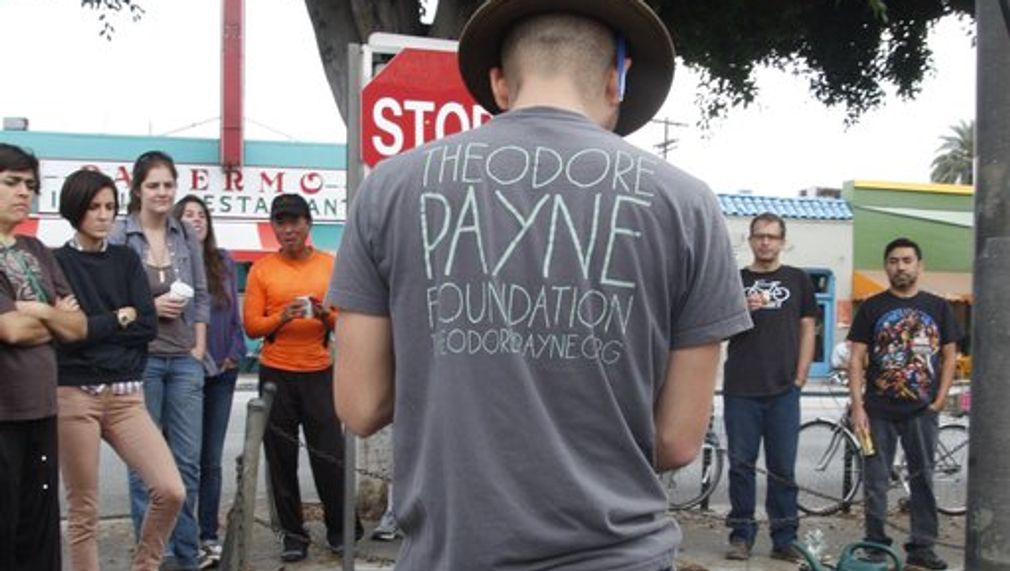Landscaping for Resilience: Ecologic and Social transformation with the Theodore Payne Foundation
Landscaping for Resilience brings people together to change their neighborhoods through installing and maintaining public native plant gardens. People connect over their shared desire for pubic green space and a richer and more rewarding urban environment. LFR provides environmental and social benefits, demonstrating how communities, government agencies, and non-profits can work together to enhance green space and create skill sets for positive environmental change within Los Angeles County.

How do you plan to use these resources to make change?
Engage residents and stakeholders
Expand a pilot or a program
How will your proposal improve the following CONNECT metrics?
Rates of volunteerism
Adults getting sufficient social & emotional support
Participation in neighborhood councils
Percentage of Angelenos that volunteer informally (Dream Metric)
Government responsiveness to residents’ needs (Dream Metric)
Attendance at public/open streets gatherings (Dream Metric)
Describe in greater detail how you will make LA the best place to CONNECT.
Landscaping for Resilience (LFR), winner of the LA County Board of Supervisor's 2015 Green Leadership Award, is TPF’s proven model for connecting LA residents through environmental action.
In LFR, TPF partners with volunteer groups, neighborhood councils, and others seeking to convert the landscaping of public spaces in their community to native, drought-tolerant plants. The community groups coordinate volunteers, identify a public site to transform, work with their Neighborhood Council to secure support, and assume long-term maintenance of the site.
TPF designs the site plan and brings together the community for information sessions about the new landscape and its benefits. TPF directs the volunteers in site preparation and leads them in the installation of the new landscape. The impact is immediately evident: sterile, resource-intensive and/or stressed-looking landscapes are transformed by cooperative action into sustainable ones that celebrate the authentic, natural beauty of the region while serving as neighborhood focal points. Subsequent maintenance workshops teach water-saving irrigation practices, mulching, and weed abatement. All that’s required of the community is enthusiasm, shovels, physical labor (exercise!), and a desire to increase one’s knowledge and enhance one’s community.
LFR will engage 2,000 residents as volunteers to create and maintain eight public gardens. Volunteers will include adults, high school students, and families who set a very public example of what organized volunteers can accomplish. Regular volunteer maintenance days will ensure that neighbors have continuing opportunities for positive interaction and connection through social media. Much of the project coordination will occur through social media connecting residents with a project- and neighborhood-based network.
LFR will connect neighbors across generations by bringing them together to discuss and create public works. During project conceptualization, design, construction, and throughout maintenance, LFR creates a series of authentic opportunities for public gatherings. The new gardens, generated and maintained by public demand, will serve as focal points for adults to interact with their neighbors, forging cross-generational connections as they share skills and experiences.
If these projects are located near transit stations, the gardens will increase ridership (as envisioned in the First Last Mile Strategic Plan and Metro Green Place plan).
Please explain how you will evaluate your work.
TPF will evaluate the success of LFR on the number of volunteers engaged in educational and work activities, the number of hours volunteers contribute, the level of support from Neighborhood Councils, the number of gardens created through LA2050 and planned for the future, the number of (newly created) #LFR tweets and Facebook posts, and the amount of traditional media coverage. If timing allows and all the sites can be dedicated on the same weekend, we will implement a communications plan that crosses media platforms.
Water saving is another evaluation method. Given that California native plants use one-third the water (and less energy for transporting and treating that water), it makes sense to landscape native. Landscaping matters because urban areas consume ~20% of California’s water, and ~50% of that water is for outdoor use. We will track water use at the native plants gardens.
How can the LA2050 community and other stakeholders help your proposal succeed
Money (financial capital)
Volunteers/staff (human capital)
Publicity/awareness (social capital)
Infrastructure (building/space/vehicles, etc.)
Community outreach
Network/relationship support